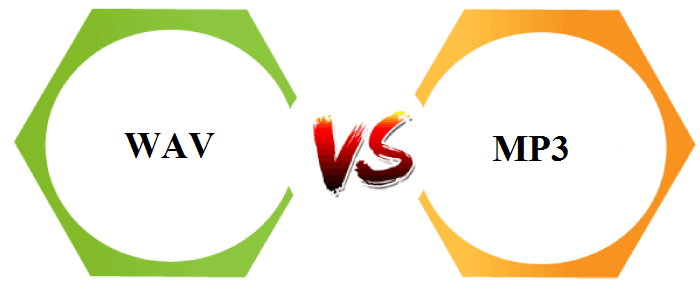Difference between WAV and MP3The WAV and MP3 are both file formats that store digital audio. These file formats are distinguished by the fact that MP3 is a lossy and compressed type of file in which some data is deleted from the original audio source. In contrast, the WAV format is an uncompressed sort of audio file. The WAV file is significantly larger than the MP3 file. In this article, you will learn about the difference between WAV and MP3. But before discussing the differences, you must know about WAV and MP3. What is WAV?WAV is an abbreviation for "Waveform Audio File Format" (WAV or WAVE). It is the standard container format for digital audio, and it was developed by the joint effort of IBM and Microsoft. It is mainly used for storing high-quality audio files on the computer system, and it is the main format utilized on Microsoft Windows systems for uncompressed audio. A WAV file encoder employs pulse code modulation (PCM) technology, which records analog sound waves at regular intervals. The PCM encoder converts the audio file into digital data with differing degrees of detail. The PCM is at 44.1 kHz and 16 bits for a CD-quality file. However, most audiophiles prefer 48-kHz and 24-bit stereo sampling, which permits more high and low frequencies to enter the mix, and this sampling rate outperforms CD audio quality. WAV file is generally used in professional recording sessions and to create high-quality CDs where the file quality is critical. It contains an uncompressed audio copy, and the original sound signals are preserved in the copy because the audio files are not compressed. As a result, the user obtains a high-quality audio copy. As the WAV files are uncompressed, so they demand a huge amount of disk space to store the audio. As a result, WAV files are larger in size than MP3 file format. Due to the larger file size, the WAV files are not regularly used for song storage like MP3 ones. It is also complex to move files from one system to another via the internet or Bluetooth. WAV format has very good file quality and is consequently favoured by professional recording studios and other facilities for recording and storing music. What is MP3?MP3 is an abbreviation for the "MPEG-1 Audio Layer-3" file format. It is a digital audio format that is developed by the Moving Picture Experts Group in the year 1990. It has become the most widely utilized technique for storing audio files. MP3 file format's algorithm is the lossy type, which stores a significant amount of information while taking up less space. For instance, an audio CD may carry 1 hour of uncompressed LPCM audio. Still, when the same CD is produced using MP3 compression, it may contain up to 7 hours of the same music but with significantly lower file quality. The "3" in MP3 refers to layer 3, and "MP" refers to the MPEG-1 standard. However, the MPEG standard defines three different multimedia characteristics: audio, video, and systems. MP3 is a component of the MPEG's audio component. MPEG audio defines three downward compatible levels of audio compression, each of which can understand the layer located lower to them. The first layer has a high bit rate and good quality, but as you move downward, the size and quality both decrease. The final layer is the MP3 layer, which is the most complex and is designed to transport audio across ISDN lines. MP3 file format type is rarely used in a professional environment and is commonly used to store music files on personal gadgets and transfer songs from one system to another. The audio file size is reduced due to compression, and its reduced size enables the user to share the files via the internet or Bluetooth. Key Differences between WAV and MP3
There are various key differences between WAV and MP3. Some main key differences between WAV and MP3 are as follows:
Head-to-head comparison between WAV and MP3Here, you will learn the head-to-head comparisons between WAV and MP3. The main differences between WAV and MP3 are as follows:
ConclusionThe audio files are kept in computers, and other electronic devices are stored in a digital format. These data are transformed from their analog origins into a digital form that a machine may understand, like a computer system or a digital music player. There are two audio file types, WAV and MP3. The WAV is more universally compatible since it makes only minor changes to the original audio signals and contains the exact data needed to convert analogue audio to digital format. In contrast, unnecessary data is removed from MP3 files to significantly shrink the file size.
Next TopicDifference between
|
 For Videos Join Our Youtube Channel: Join Now
For Videos Join Our Youtube Channel: Join Now
Feedback
- Send your Feedback to [email protected]
Help Others, Please Share










